Business Continuity Management System (BCMS)
Samsung Biologics is building greater trust with its Business Continuity Management System (BCMS) for clients who are seeking a reliable manufacturing partner to ensure a stable supply of life-saving drugs, especially in light of the current pandemic. ISO 22301 is especially meaningful given our critical mission to the biopharma industry to providing patients with a stable supply of life-saving therapies under any circumstances
-
Business Continuity
Management System
(BCMS, ISO 22301) -
Samsung Biologics’ holistic management process that identifies potential threats to an organization and the impacts to business operations from such threats; and provides a framework for building organizational resilience with the capability of an effective response that safeguards the interests of its key stakeholders, reputation, brand and value-creating activities.


- Purpose of BCMS
-
Samsung Biologics is operating Business Continuity Management System (BCMS) to protect the assets of our company and clients from risks and to stably deliver key products and services to patients.
-
Leadership for
BCMS Operation -
Samsung Biologics hereby pledges to protect the assets of our company and clients from risk and to stably deliver key products and services to patients to comply with our Business Continuity Management policy.
We strive to identify and evaluate the risk of disruption to Samsung Biologics' activities in order to be a global leading company by implementing processes to prevent and mitigate the impact of disruption through continuous improvement.
We establish a dedicated organization to routinely manage and continually improve suitability, adequacy, and effectiveness throughout the entire whole business continuity management process.
We pledge to be a reliable company for our clients and shareholders by actively participating in BCM activities to stably deliver key products and services.
Samsung Biologics President & CEO
John Rim
- ISO 22301
-
- ISO 22301 is a comprehensive standard published by the International Organization for Standardization (ISO) that represents the highest level of commitment to business continuity and disaster preparedness.
- Samsung Biologics became the first Korean pharmaceutical company to achieve ISO 22301 certificate in 2018, and has continuously expanded the scope of certification for ensuring systemic BCMS management.
-
BCMS Steering
Group -
Samsung Biologics has three levels of teams in the response structure. The strategic, tactical, and operational teams in a response structure undertake different activities as follows:
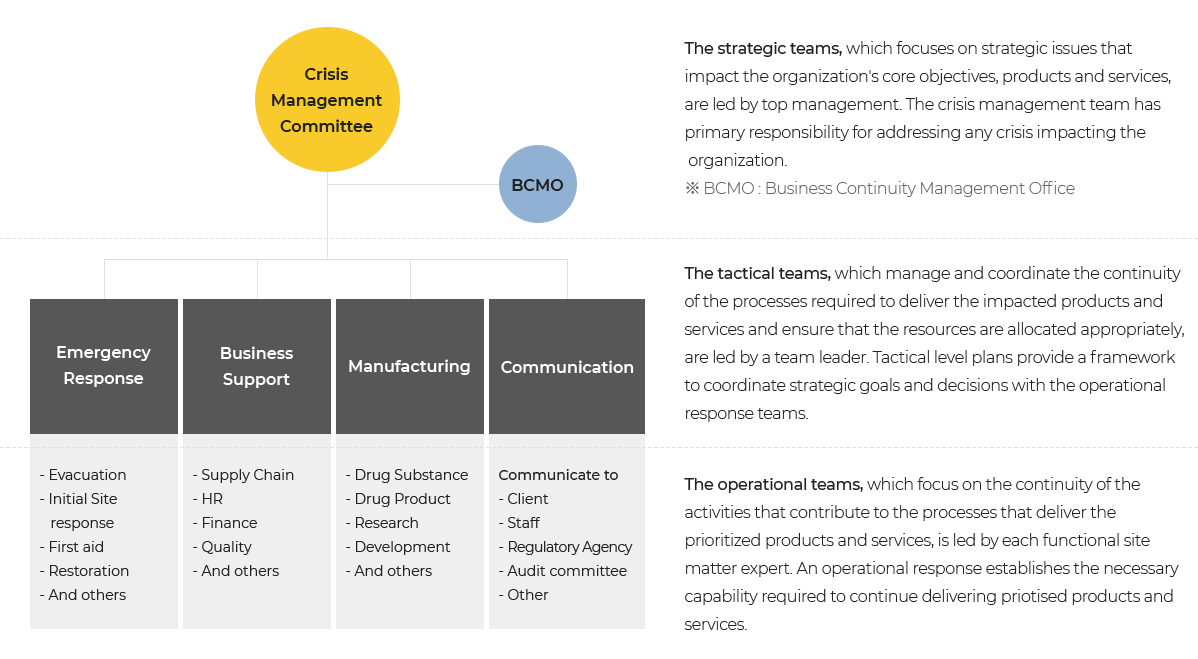
-
Crisis Management Committee
-
Emergency Response
- - Evacuation
- - Initial Site response
- - First aid
- - Restoration
- - And others
-
Business Support
- - Supply Chain
- - HR
- - Finance
- - Quality
- - And others
-
Manufacturing
- - Drug Substance
- - Drug Product
- - Research
- - Development
- - And others
-
Communication
- Communicate to
- - Client
- - Staff
- - Regulatory Agency
- - Audit committee
- - Others
- Communicate to
-
Emergency Response
- BCMO
-
The strategic teams, which focuses on strategic issues that impact the organization's core objectives, products and services, are led by top management. The crisis management team has primary responsibility for addressing any crisis impacting the organization. ※ BCMO: Business Continuity Management Office
-
The tactical teams, which manage and coordinate the continuity of the processes required to deliver the impacted products and services and ensure that the resources are allocated appropriately, are led by a team leader. Tactical level plans provide a framework to coordinate strategic goals and decisions with the operational response teams.
-
The operational teams, which focus on the continuity of the activities that contribute to the processes that deliver the prioritized products and services, is led by each functional site matter expert. An operational response establishes the necessary capability required to continue delivering priotised products and services.
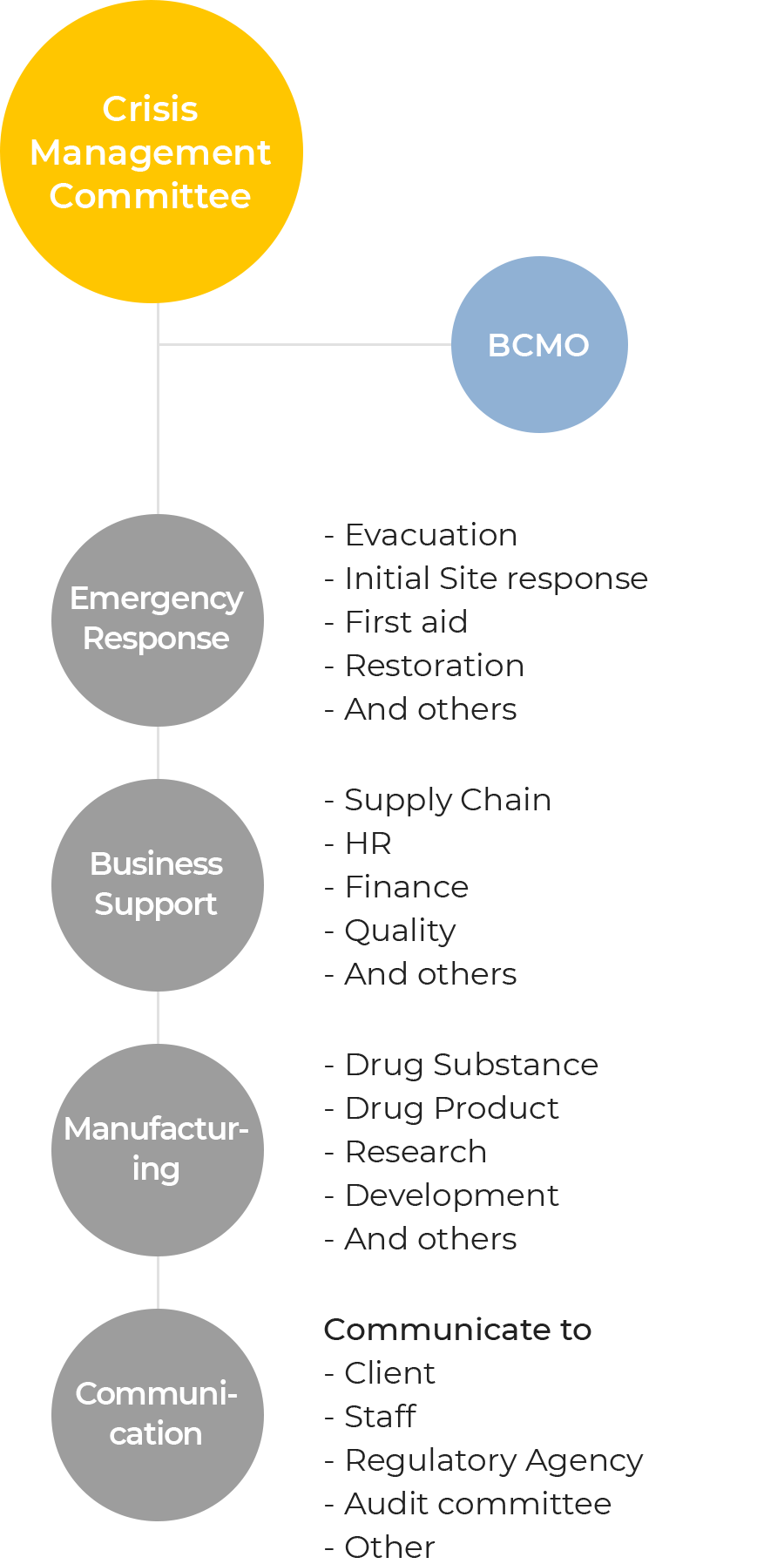
-
The strategic teams, which focuses on strategic issues that impact the organization's core objectives, products and services, are led by top management. The crisis management team has primary responsibility for addressing any crisis impacting the organization. ※ BCMO: Business Continuity Management Office
-
The tactical teams, which manage and coordinate the continuity of the processes required to deliver the impacted products and services and ensure that the resources are allocated appropriately, are led by a team leader. Tactical level plans provide a framework to coordinate strategic goals and decisions with the operational response teams.
-
The operational teams, which focus on the continuity of the activities that contribute to the processes that deliver the prioritized products and services, is led by each functional site matter expert. An operational response establishes the necessary capability required to continue delivering priotised products and services.
- Annual Operation
-
Embedding BCMS is the ongoing cycle of activities of the business continuity management program, which builds organizational resilience, and is the professional practice that defines how to integrate business continuity awareness and practice into business as usual activities.
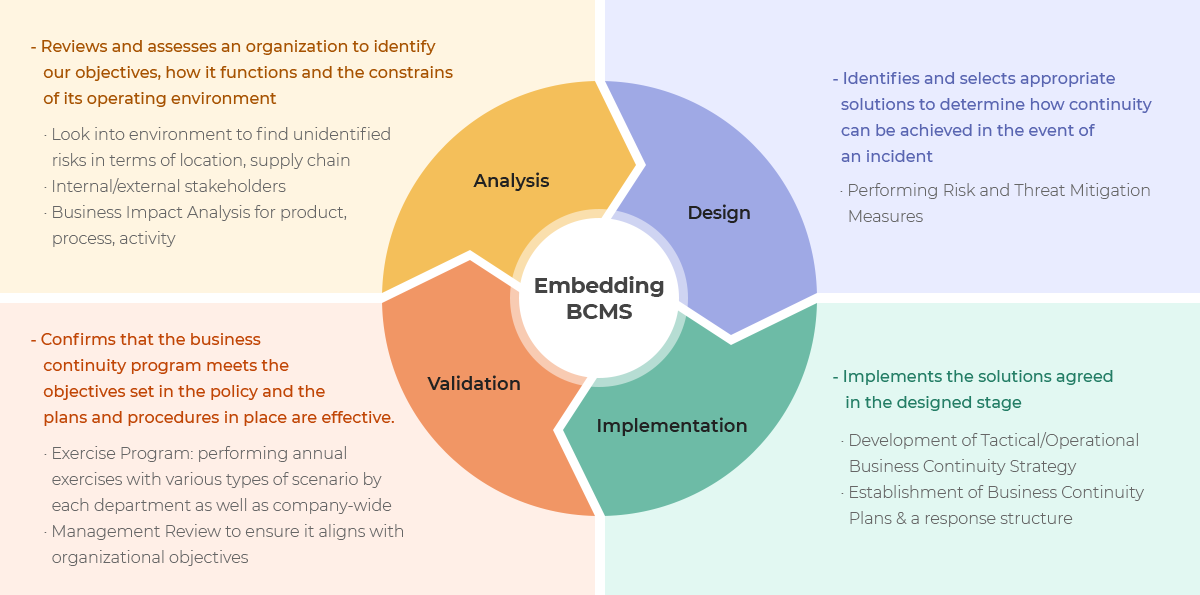
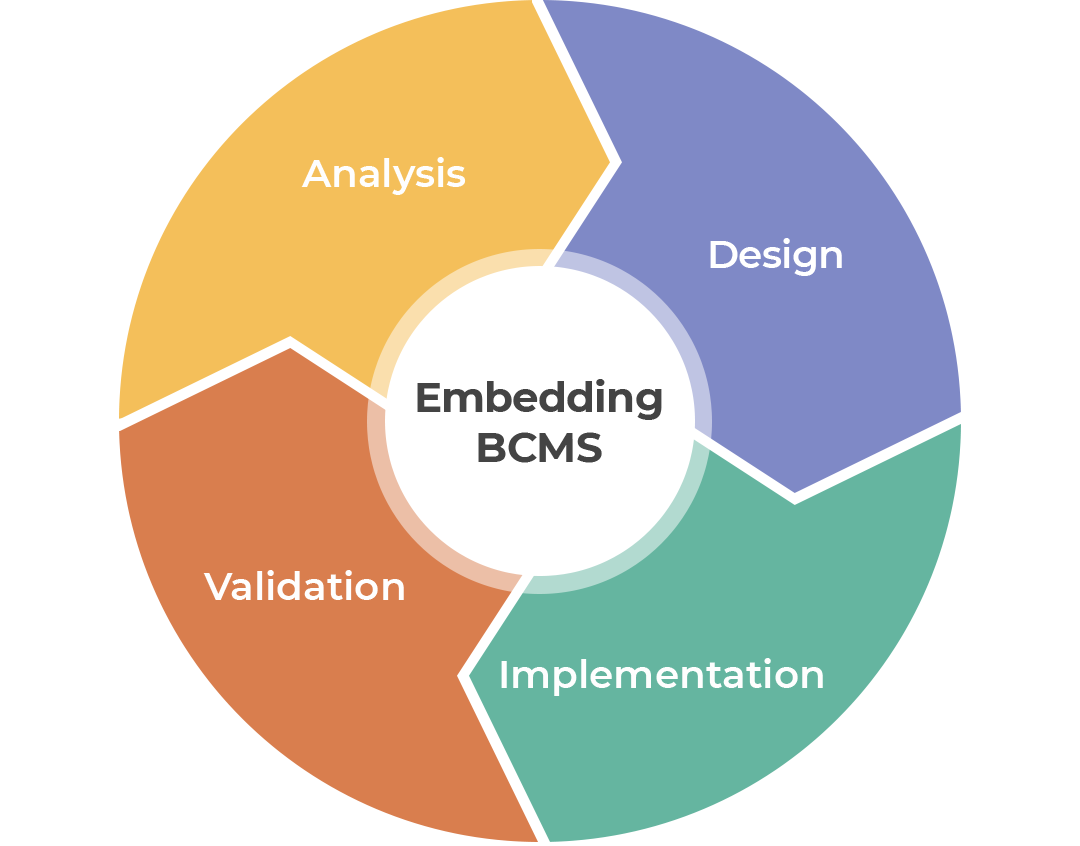
Embedding BCMS
- - Reviews and assesses an organization to identify our objectives, how it functions and the constrains of its operating environment
- · Look into environment to find unidentified risks in terms of location, supply chain society, politics and so on.
- · Internal/external stakeholders
- · Business Impact Analysis for product, process, activity
- - Identifies and selects appropriate solutions to determine how continuity can be achieved in the event of an incident
- · Performing Risk and Threat Mitigation Measures
- - Implements the solutions agreed in the designed stage
- · Development of Tactical/Operational Business Continuity Strategy
- · Establishment of Business Continuity Plans & a response structure
- - Confirms that the business continuity program meets the objectives set in the policy and the plans and procedures in place are effective.
- · Exercise Program: performing annual exercises with various types of scenario by each department as well as company-wide
- · Management Review to ensure it aligns with organizational objectives
- - Reviews and assesses an organization to identify our objectives, how it functions and the constrains of its operating environment
- · Look into environment to find unidentified risks in terms of location, supply chain society, politics and so on.
- · Internal/external stakeholders
- · Business Impact Analysis for product, process, activity
- - Identifies and selects appropriate solutions to determine how continuity can be achieved in the event of an incident
- · Performing Risk and Threat Mitigation Measures
- - Implements the solutions agreed in the designed stage
- · Development of Tactical/Operational Business Continuity Strategy
- · Establishment of Business Continuity Plans & a response structure
- - Confirms that the business continuity program meets the objectives set in the policy and the plans and procedures in place are effective.
- · Exercise Program: performing annual exercises with various types of scenario by each department as well as company-wide
- · Management Review to ensure it aligns with organizational objectives
- BCMS Exercise
-
Samsung Biologics’ exercise is to train for, assess, practice, and improve performance in an organization to absorb and adapt in a changing environment.
Samsung Biologics’ aim of exercise is to obtain an expected, measureable pass/fail outcome compared to the established plans & scenarios.
-
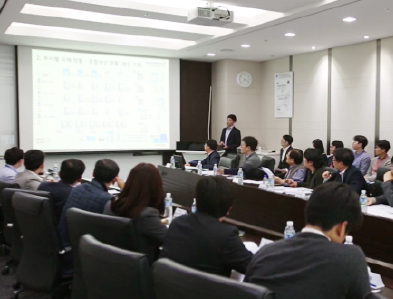
Crisis Management Committee
-
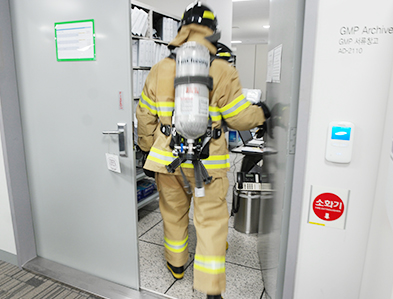
GMP Document Room Fire Exercise
-

Earthquake Exercise